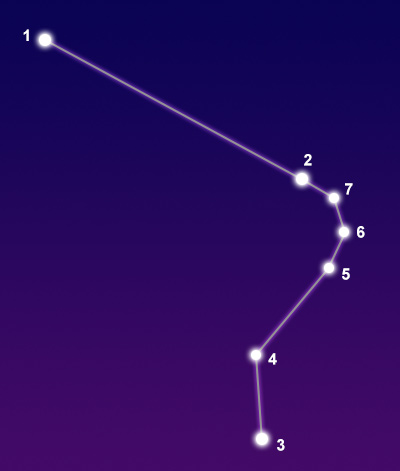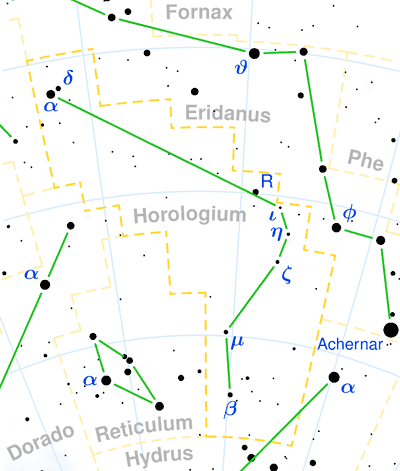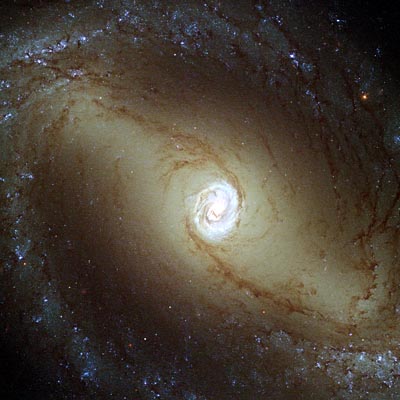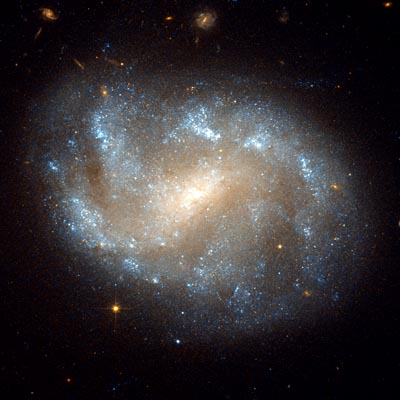Pronunciation:
(HOR-oh-LOH-jee-um)Abbreviation:
HorGenitive:
HorologiiRight Ascension:
3 hoursDeclination:
-60 degreesArea in Square Degrees:
249Crosses Meridian:
9 PM, December 25Visible Between Latitudes:
20 and -90 degreesThe constellation Horologium, the clock, is located in the southern hemisphere of the sky. It is visible from latitudes south of 23 degrees from October through December. It is a small constellation with a total area of only 249 square degrees. It ranks 58th in size among the 88 constellations in the night sky. It is bordered by the constellations Eridanus, Hydrus, Reticulum, Dorado and Caelum.
Horologium is not associated with any ancient mythology. It was named by the French astronomer Nicolas Louis de Lacaille in 1752 after his trip to the Cape of Good Hope to study the southern night sky. Lacaille named this constellation to honor Christian Huygens, the inventor of the pendulum clock in 1656-57. It was originally called Horologium Oscillitorium, “the pendulum clock” but was later shortened to Horologium, “the clock.”

points of interest below © Sea and Sky

© Torsten Bronger CC BY-SA 3.0
R Horologii
Beta Horologii
Mu Horologii
Zeta Horologii
Eta Horologii
Iota Horologii
N/A
N/A
N/A
N/A
N/A
N/A
Red Giant Star
Blue Giant Star
Yellow-White Subdwarf Star
Yellow-White Dwarf Star
White Dwarf Star
Yellow Dwarf Star
3.92
4.98
5.13
5.21
5.30
5.40
Horologium contains no bright stars. The brightest star in this constellation is Alpha Horologii with a visual magnitude of 3.85. It is an orange giant star located 314 light years from Earth. With a magnitude of 3.92, R Horologii is the second brightest star. It is a red giant star approximately 100 light years distant. The third brightest star is Beta Horologi with a magnitude of 4.98. It is a blue giant star about 310 light years from our solar system.
There are no Messier objects in this constellation but it does contain a number of deep sky objects, mostly star clusters and galaxies. It is also the home of the Horologium supercluster, which contains over 5,000 galaxy groups with over 300,000 individual galaxies. This giant cluster spans an area of space about 550 million light years across. Some of the most notable of these galaxies include a barred spiral galaxy called NGC 1433 and another barred spiral galaxy called NGC 1433, also known as Miltron's Galaxy. Unfortunately none of these can be see without a large telescope.

© ESA/Hubble / CC BY 4.0

© ESA/Hubble & NASA / CC BY 3.0



